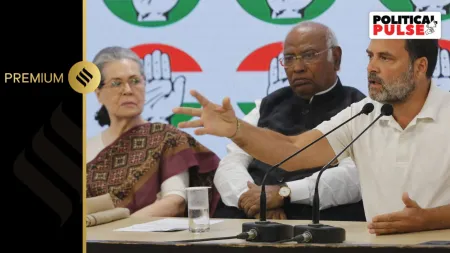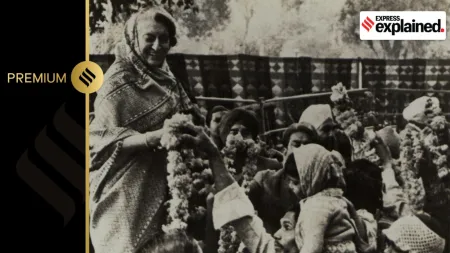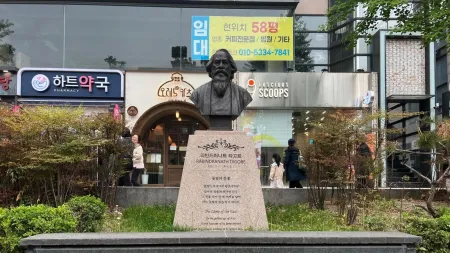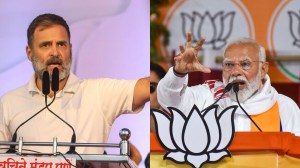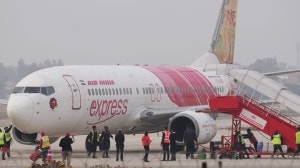- India
- International
After 54 months as forced migrants, Dalits in Banaskantha get govt lands
State govt has finally allotted 100 square-metre plot in Sodapur village to each of the 26 Dalit families of Dhada village of Banaskantha
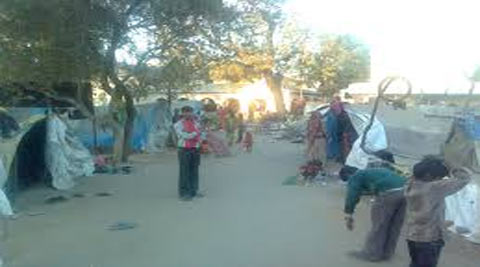 Dalit families have witnessed women delivering babies nine times and seven young couples getting married at the makeshift camps inside the Mamlatdar office of Deesa.
Dalit families have witnessed women delivering babies nine times and seven young couples getting married at the makeshift camps inside the Mamlatdar office of Deesa.
The state government has finally allotted 100 square-metre plot in Sodapur village to each of the 26 Dalit families of Banaskantha district’s Dhada village. They were forced to stay in the premises of Mamlatdar office in Deesa of the district for around 54 months as migrants, protesting atrocities of local upper caste “darbar” community at their village.
Though, the district administration said that the Dalits have been “shifted” to a village as a “special case” and refused to call it a “hijrat” — officially registered forced migration of a group of community — a blow to state government’s claims of peaceful and socially harmonious society.
During this ordeal of 54 months as forced migrants, these Dalit families have witnessed women delivering babies nine times and seven young couples getting married at the makeshift camps inside the Mamlatdar office of Deesa.
The entire episode erupted in 2008 when a 25-year-old Dalit youth, Ramesh Parmar, who was working as a social worker, was killed allegedly in a road accident under the tractor of a local darbar community member. While police and district administration officers maintained that the death was completely due to a road accident, the Dalits and their supporters alleged that the youth was intentionally killed in a road accident by the accused owing to animosity.
Pethabhai Dabhi, a local from Banaskantha, said, “Local Darbar community wields influence in the Dhada village and they oppress the Dalits. Ramesh had given some money to one of the darbars and when he sought the money back, they first intimidated him and then killed him in a road accident.”

Parmar’s unnatural death was followed by a series of public agitation by Dalits in Banaskantha and elsewhere in Gujarat and the local Dalits even refused to accept the body. Subsequently, 26 Dalit families left their homes in Dhada village and camped in Mamlatdar office of Deesa in August 2009 and since then they had been staying at the makeshift arrangement.
Last week, Banaskantha District Collector Mahendra Patel informed the Dalits that they had been granted a 100 square-metre plot per family at Sodapur village of Dantiwada taluka, some 15-km from Dhada village of Deesa taluka.
Talking to The Indian Express, Patel said, “We had sent a proposal to the state government to specially consider the case of these families and to provide them alternate accommodation at a nearby village. And the state government has granted that proposal as a special case and decided to provide 100 square-metre plot to each of the 26 families at Sodapur village. We have also written to the Social Justice & Empowerment Department to include these families in Indira Awas Yojna or Dr Babasaheb Ambedkar Awas Yojna to build houses on the plots.”
Patel, meanwhile, refuted the allegations that the Dalit youth was intentionally killed. “It was a case of death in a road accident and not of murder.”
However, Patel refused to call the migration as “hijrat”. “These families have been shifted as a special case. Kaushik Parmar, a Mehsana-based human rights activist who actively supported the migrated Dalits since 2008, said, “If this is not hijrat then what is it? These families have spent 54 months in makeshift tents of clothes and plastic covers in sub-human conditions without even proper facility of drinking water out of fear of the upper caste people of their village.”
May 09: Latest News
- 01
- 02
- 03
- 04
- 05


